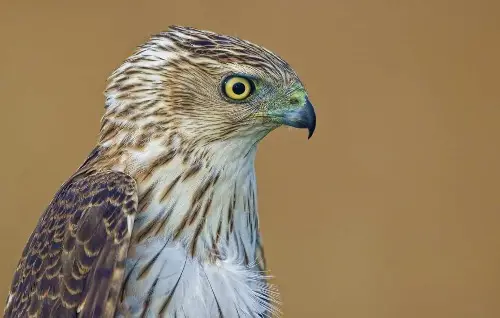While Maryland is one of the smallest states in North America, it has an impressive landscape, which includes 18 national and 53 state parks. From rolling lands to dense forests, there are plenty of habitats for birds of prey, including hawks in Maryland.
The Old Line State is home to at least eight hawk species. Some of them are year-round residents while others are migrant species that you can spot only in the summer or winter. Most of these predators live in the wild, while there are also some that you can attract in your yard.
Read on to learn more about the types of hawks in Maryland, including their physical characteristics, behaviors, and habitats.
Identification Of The Most Popular Hawks In Maryland
1. Red-Tailed Hawk (Buteo jamaicensis)
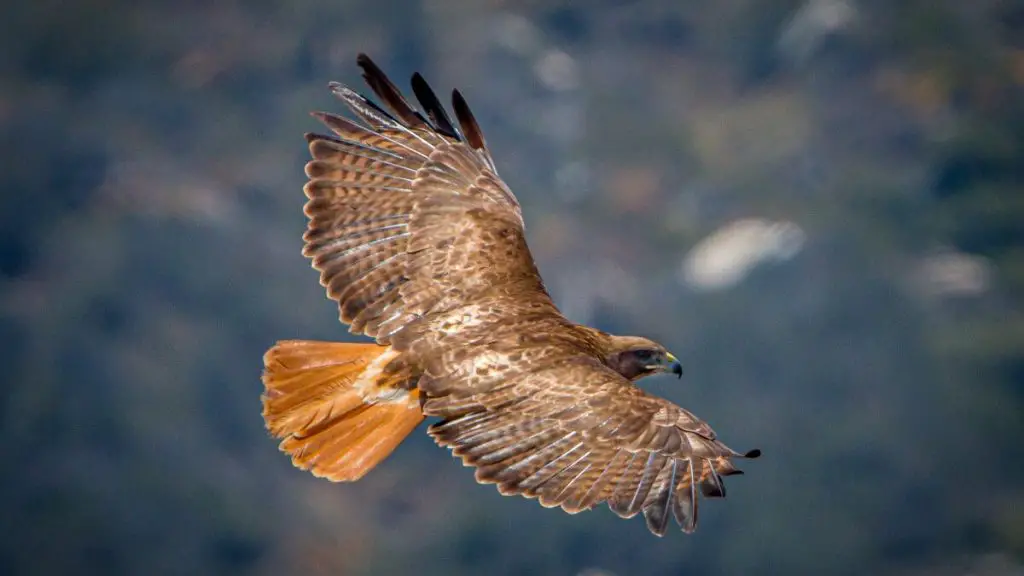
The red-tailed hawk is the most common hawk that you will see not only in Maryland but also in the other parts of North America.
You will see red-tailed hawks in Little America year-round. It is easy to spot these birds of prey during long car drives. They are also often perched on telephone wires.
For easy identification of the red-tailed hawk, you must look at its characteristic red tail. The tail is wide but short.
The coloration of the body, on the other hand, is not a reliable identifier since its plumage can range from white to black and other colors.
More so, a red-tailed hawk has diverse habitats. In Maryland, they are highly adaptable, so you can find them almost anywhere, including the Yellowstone National Park. Aside from forests, they are common in woodlands, shrublands, pastures, and rainforests.
An easy way to detect the presence of a red tailed hawk is to listen to its call. It will sound like bald eagles. It is high-pitched and descending, which is a sound often used in movies to depict raptors.
The diet of red-tailed hawks will be mostly small mammals, including ground squirrels and voles. They can also eat snakes and larger birds.
2. Sharp-Shinned Hawk (Accipiter striatus)
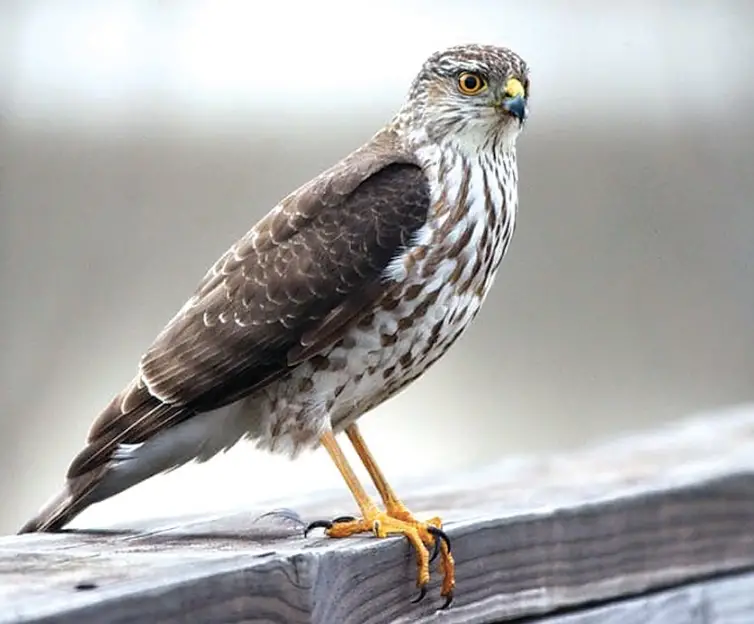
On average, the sharp-shinned hawk has a length of 9.4 to 13.4 inches and a wingspan of 16.9 to 22.1 inches. Meanwhile, the weight ranges from 3.1 to 7.7 ounces.
With their tiny body, sharp-shinned hawks are the smallest hawks you will find in Maryland.
A sharp-shinned hawk can stay in Maryland throughout the year or can migrate to other parts of the country. Those in the western part of the state are permanent residents. Meanwhile, most hawks in the state’s eastern and central regions are migratory.
Spotting sharp-shinned hawks can be challenging since they are known for being elusive birds. They live in closed woodland canopies and forest edges, so sightings are not as common as the other hawk species on this list.
Even if they are more common in frosted areas, it is also possible to see a sharp-shinned hawk lurking in the yard, especially if you have the right birdfeeder.
These birds hunt through their wings. It will swoop down and capture its prey, which includes warblers, sparrows, thrushes, and robins. Up to 90% of its diet consists of small birds.
3. Red-Shouldered Hawk (Buteo lineatus)
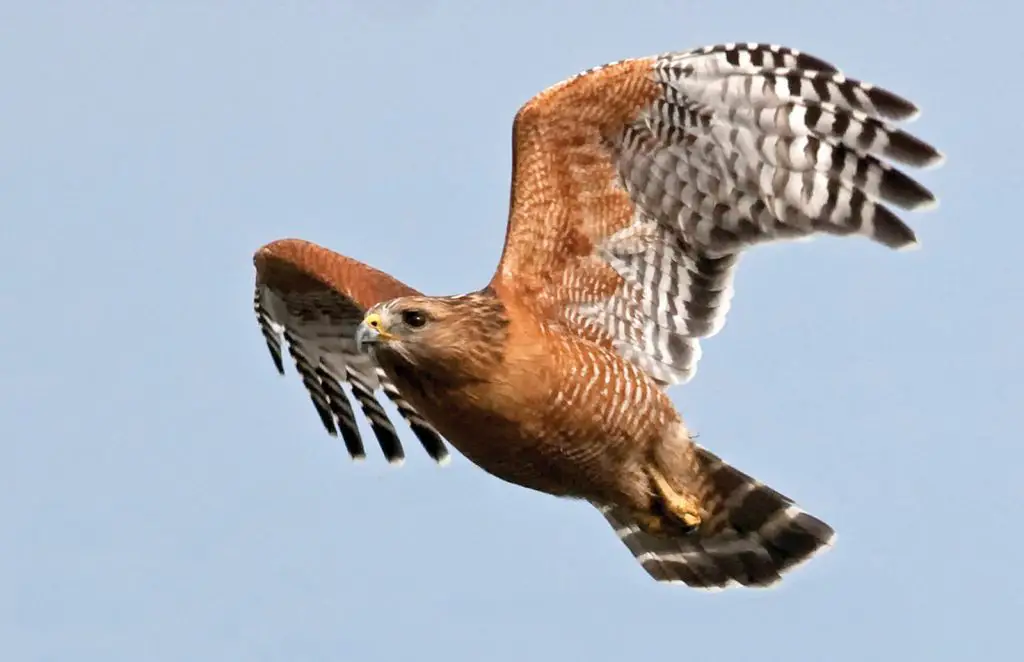
You will find red-shouldered hawks in Little America throughout the year, especially in the eastern and central regions of the state.
As the name implies, a red-shouldered hawk has red shoulders, which are most visible when it is perched.
It is a medium-sized bird, which is between the size of a swan and a crow. Another way to identify red-shouldered hawks is to look at their color. Most will have brown plumage, which will vary in shade. They also have warm-bellied breasts and underbellies.
More so, this hawk Maryland is known for being territorial. It is fierce and will attack crows, great horned owls, and even humans who will come near their nests.
The red-shouldered hawk becomes even more aggressive during breeding seasons. Males will have a mating display that involves them doing a sky dance, which is a series of dives in the sky.
If you like to see a red-shouldered hawk, then you should go to swamps, marshlands, and woody forests. They frequently stay on upper canopies, which makes them more efficient when hunting.
Fun Fact: The Red-Shouldered Hawk is also a common sight among the hawks in South Carolina that people love to see soaring in the air with kingly magnificence!
4. Rough-Legged Hawk (Buteo lagopus)
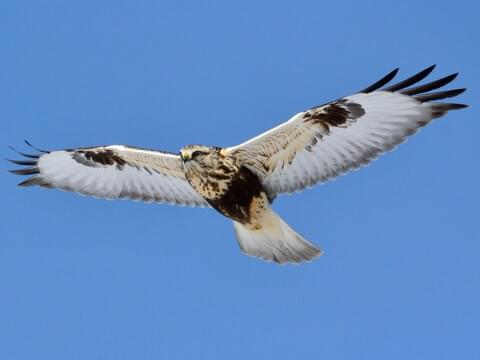
Outside of their breeding season, it is possible to see rough-legged hawks in the Old Line State. They are present in the state only during the winter. After such, they will migrate to the arctic regions.
A rough-legged hawk has rough feathered legs, which is where it got its name. Its thick feathers will keep the bird warm in the arctic.
It is the only raptor you will find in Maryland with feathers that extend to its feet. This Maryland hawk is mostly deep-brown through its body and has wide wings. To add, you will see white lines on its wings. It has a white throat, and its tail has black and white barring.
More so, rough-legged hawks are mostly active during the day. They will hunt during dawn and dusk. The most common prey include small mammals and songbirds.
Being bold hawk species, they are extremely territorial. Most of the time, they are loners. They will vigorously defend their territory against other birds, even humans.
Lastly, a rough-legged hawk is also known for their distinct hunting style. They will hover while facing the wind while looking for food.
5. Northern Harrier (Circus hudsonius)
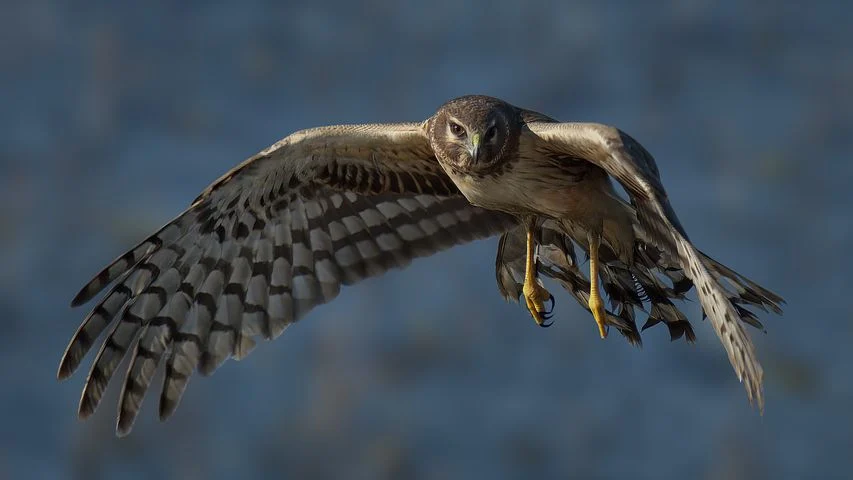
Even from a distance, northern harriers are easy to recognize. Aside from its long tail and long wings, this raptor is also noticeable because of its owl-shaped face.
The most common habitat of this hawk in Maryland is an open wetland with an area of at least 100 acres. During the nesting season, they are more common in the south-eastern part of the state where they prefer wetlands with no trees. Meanwhile, in western Maryland, they frequent reclaimed strip mines.
A northern harrier is known for its remarkable hearing. It has a curved facial ruff that reflects sound, allowing it to locate its prey through its ears.
According to the Maryland Bird Conservation Partnership, the northern harrier is considered Species of Greatest Conservation Need in the state. Since the 1970s, the population of this hawk has been steadily declining in North America. Based on estimates, only about 100 of these birds breed in Little America.
When it is flying, the northern harrier is seen low on the ground. It is graceful with its wings forming a V shape.
6. Broad-Winged Hawk (Buteo platypterus)
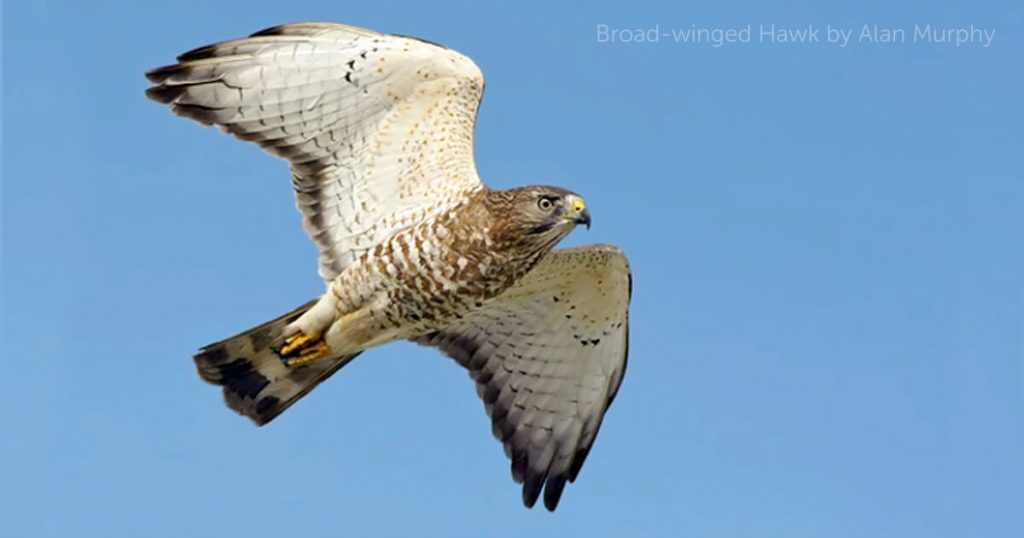
Despite having broad wings, these birds of prey in Maryland have short but stocky bodies. It is almost the size of a crow and goose. In terms of appearance, a broad-winged hawk has a flat and owl-like face. It has a small bill with a sharp hook.
Males have a gray upper body and whitish below with a black-banded tail and black wingtips. On the other hand, females have whitish undersides with brown streaks. The streaks are fewer in immature females.
Broad-winged hawks have a breeding only population in Maryland. You will see them only in the spring to fall when they are most common in forests and roadsides.
During the start of fall, broad-winged hawks will leave South America and find their way to North America, including Maryland. They can travel up to 4,000 miles annually and they look spectacular in-flight during their migration.
A broad-winged hawk is known for its perch and pounce behavior. They will sit on top of trees in hardwood forests and when they see their prey, they will swoop in an instant. Their sharp talons make it easy to catch their food, including small mammals, rodents,snakes, frogs, and young turtles.
Fun Fact: This raptor is also one among the hawks in Connecticut that soar on the state!
7. Cooper’s Hawk (Accipiter cooperii)

Like the sharp shinned hawk, a cooper’s hawk is a part of the Accipiter family. It is a group of true hawks with long tails and short rounded wings.
Even if it has a medium-sized body, the head is large. It is also recognizable because of the red feathers on its breast and belly. The wings, on the other hand, are often grey.
It is known for its flying agility. You will find them soaring fast chasing their prey.
While a Cooper’s hawk prefers thick and dense forests, you will also find them in leafy suburban areas and public parks.
You can find these hawks of Maryland even in your backyard. They can frequent bird feeders. In the wild, they often eat small mammals and birds, including tree squirrels, mice, bats, jays, robins, and flickers.
When they are flying, Cooper's hawks make a flap-flap-glide pattern, which is common with other accipiters. Even when it is flying in a large open area, it is rare for the bird to flap continuously.
Lastly, cooper’s hawks are easy to get rid of if they are being a disturbance to the backyard. All that you need is to remove a bird feeder. This will force them to look for food somewhere else.
Fun Fact: Cooper's Hawk is a regular sight among the other hawks in North Carolina!
8. Northern Goshawk (Accipiter gentilis)

Wrapping up our list of Maryland birds of prey is the northern goshawk. It is an accipiter, like a sharp shinned hawk and cooper’s hawk. Their sightings are rare in the state.
A northern goshawk has a dark-colored head and deep eyes. Its upper body is blue-gray to brown with morphs. Meanwhile, the underbody is bluish-white with light-gray barring.
Northern goshawks are difficult to spot, especially in the city and suburbs. They prefer living away from civilization and staying in dense forests.
These hawks are also known for being fierce and defensive. Go too close to their nests and they will attack you!
They make a ca-ca-ca sound. During its call, they will turn their heads slowly from one side to another, resulting in a ventriloquist sound effect.
Breeding pairs of these raptors are known for doing a sky dance. Such strengthens their bond before they will nest together.
Lastly, these hawk species will hunt during their flight. Once ready to pounce, they will use their claws to take their prey. At times, they can also use their foot. The diet consists mainly of other birds, small mammals, and amphibians.
Watch This!
Frequently Asked Questions
What kind of hawks can you find in Maryland?
You can find up to eight different species of Maryland hawks. They are the red-tailed hawk, sharp-shinned hawk, red-shouldered hawk, rough-legged hawk, northern harrier, broad-winged hawk, cooper’s hawk, and northern goshawk.
Where can I find Maryland hawks?
Woodlands, grasslands, high ridges, and marshes are some of the most common places where you will find hawks in Little America. Specifically, one of the top places for bird watching in the state is Fort Smallwood Park, which attracts up to 12,500 in the spring.
What do hawks eat in Maryland?
The diet of hawks of Maryland will depend on its specific type. Most of them, however, will eat small mammals, including rabbits, voles, moles, squirrels, and other birds, including blackbirds and European starlings.
Are hawks protected in Maryland?
Yes, hawks in Maryland are protected. Hence, it is illegal to catch, harm, hunt, shoot, or kill a hawk in the state. The primary legislation that protects these birds in the state and the country is The Migratory Bird Treaty Act of 1918 which is also one of the earliest environmental laws in the country.
Conclusion
From their menacing graze to commanding flight, hawks are a sight to behold. You will find many species in Maryland throughout the year while others are seasonal. While most are in the forests, you can even attract them to your yard with the right techniques, such as installing bird feeders.
Are there other hawks in Maryland that we missed? Let us know by leaving a comment below.

